The Leica X1: Retro Outside, High-Tech Inside
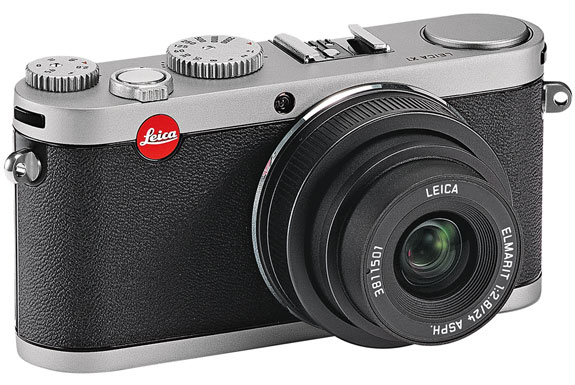
SPOT MORE COOL STUFF:
Camera Reviews | 1 Comment
| All Tech & Gadget Reviews
For much of the early and mid 20th century Leica was the world’s most stylish and sophisticated camera manufacturer.
The father of modern photojournalism, Henri Cartier-Bresson, used a Leica camera for his work. While covering World War II he was found himself on the verge of being captured by the enemy. Not only did Cartier-Bresson bury his Leica to prevent it from falling into Nazi hands but made the dangerous mid-war journey to retrieve it after escaping from a POW camp!
In 1954 Leica introduced the M series, which almost single-handedly gave birth to the class of “professional amateur” photographer. Leica’s M cameras allowed for serious photographers (including the grandfather of Spot Cool Stuff) to purchase equipment very much like what high-end photographers were using but at a fraction of the price.
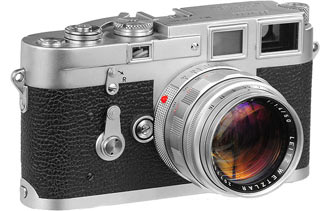 Today, Leica is still respected for the clarity of their lenses and the quality of their build. In their X1 compact digital camera, Leica also incorporated some of the style of their classic cameras (like the 1950s rangefinder pictured to the right). But don’t be fooled by the retro design—on the inside the X1 is all modern and high tech.
Today, Leica is still respected for the clarity of their lenses and the quality of their build. In their X1 compact digital camera, Leica also incorporated some of the style of their classic cameras (like the 1950s rangefinder pictured to the right). But don’t be fooled by the retro design—on the inside the X1 is all modern and high tech.
So is the Leica X1 worth buying? The pros, the cons and Spot Cool Stuff’s assessment:
The Pros
![]() The quality of the photos. Wow! Clear and stunning, with very little noise even at 1600 ISO. The Leica X1‘s excellent results come from two key factors:
The quality of the photos. Wow! Clear and stunning, with very little noise even at 1600 ISO. The Leica X1‘s excellent results come from two key factors:
![]() The large sensor. The X1 sports a CMOS sensor in a APS-C size that’s nearly identical to that found in a high-end SLR.
The large sensor. The X1 sports a CMOS sensor in a APS-C size that’s nearly identical to that found in a high-end SLR.
![]() An outstanding lens. The ELMARIT 1:2.8/24 mm has an effective focal length of 36mm when paired with the sensor’s 1.5 crop factor. That’s in essence the same lens Cartier-Bresson used, the same lens that captured many of history’s famous photographs.
An outstanding lens. The ELMARIT 1:2.8/24 mm has an effective focal length of 36mm when paired with the sensor’s 1.5 crop factor. That’s in essence the same lens Cartier-Bresson used, the same lens that captured many of history’s famous photographs.
![]() The build quality of the X1 is excellent. The camera has some of the sturdiness of a classic Leica rangefinder.
The build quality of the X1 is excellent. The camera has some of the sturdiness of a classic Leica rangefinder.
![]() Included with the X1 is a copy of Adobe Photoshop Lightroom—perhaps the best photo editing and management software on the market (that costs $250 when purchased separately).
Included with the X1 is a copy of Adobe Photoshop Lightroom—perhaps the best photo editing and management software on the market (that costs $250 when purchased separately).
![]() Well-placed dials on the X1 makes setting the shutter speed and aperture easy—no screen menus to sort through. Another huge plus: the dedicated ISO and white balance buttons on the back.
Well-placed dials on the X1 makes setting the shutter speed and aperture easy—no screen menus to sort through. Another huge plus: the dedicated ISO and white balance buttons on the back.
![]() Partly because of those well-placed dials, and partly because of it’s smart internal electronics, the Leica X1 is one of the easiest cameras of any class to use and get great photos out of.
Partly because of those well-placed dials, and partly because of it’s smart internal electronics, the Leica X1 is one of the easiest cameras of any class to use and get great photos out of.
The Cons
![]() Sadly, so sadly, the Leica X1 is expensive. Really expensive. For the nearly $2,000 price tag you can get an excellent SLR with lots of extras—a Canon 7D kit, for instance.
Sadly, so sadly, the Leica X1 is expensive. Really expensive. For the nearly $2,000 price tag you can get an excellent SLR with lots of extras—a Canon 7D kit, for instance.
![]() Another huge negative: the X1 is not at all versatile. It has no zoom, doesn’t take video and doesn’t allow of interchangeable lenses.
Another huge negative: the X1 is not at all versatile. It has no zoom, doesn’t take video and doesn’t allow of interchangeable lenses.
![]() The X1 doesn’t output in RAW, only JPEG and DNG files. The quality of the JPEGs is superb—the best we’ve seen. Still, even the best JPEGs won’t allow for the photo editing possibilities that RAW will.
The X1 doesn’t output in RAW, only JPEG and DNG files. The quality of the JPEGs is superb—the best we’ve seen. Still, even the best JPEGs won’t allow for the photo editing possibilities that RAW will.
![]() The X1 takes more than 3 second to power up—that’s frustratingly slow. Less frustrating, though still somewhat so, is the X1′s sluggish autofocus speed.
The X1 takes more than 3 second to power up—that’s frustratingly slow. Less frustrating, though still somewhat so, is the X1′s sluggish autofocus speed.
Sample Images
Compared to the Competition
The Leica X1 is too distinctive to have any direct competitors. Two (much cheaper!) options to consider are the Panasonic Lumix DMC-GF1 and the Sony Alpha NEX-5.
Our Verdict
No ultra-compact digital camera takes better photos than the The Leica X1. The camera is truly a delight to use. Spend an afternoon walking around with an X1 capturing scenes and it is hard not to feel like a photojournalist à la Henri Cartier-Bresson.
The problem is that the Leica X1′s lack of versatility (eg. no zoom) makes it unwise to select as your primary camera. And the relatively huge price tag makes it difficult to choose the X1 as a secondary (or even tertiary) camera. However, if you can afford it, the X1 makes for an absolutely wonderful compliment to an SLR. The easy-of-use and small form factor also makes the X1 ideal for instilling a love of photography in a young photographer-to-be.
So what should you choose as a primary camera if you are looking for a compact capable of taking SLR-quality photographs? Spot Cool Stuff suggests the Sony Alpha NEX-5. The Alpha NEX—the world’s smallest, lightest consumer interchangeable lens digital camera—has the same large sensor that the X1 has. And with the money you’ll save choosing an Alpha NEX over a Leica X1 you can send yourself vacation and try out your new camera there.
LEARN MORE & BUY | JOIN US ON TWITTER / FACEBOOK |
Related posts:
8 Cool Gifts Under $50 For Photographers and Photography Lovers
Tour Europe in a Retro, Affordable Camper Van
The Waterproof, Ultra-Compact Pentax Optio W90 Camera
Reviews of the Best Digital Cameras for Travel
Read more digital camera reviews












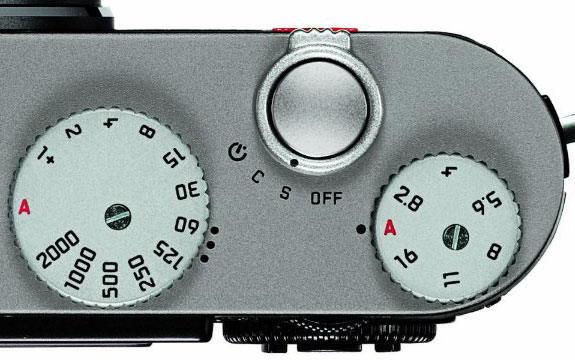



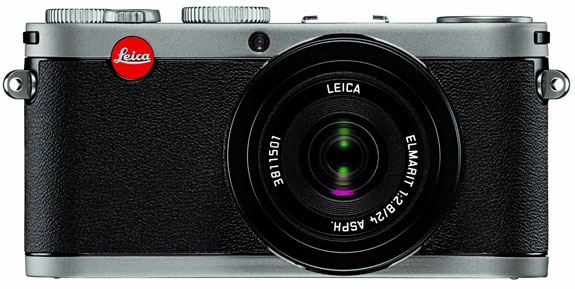
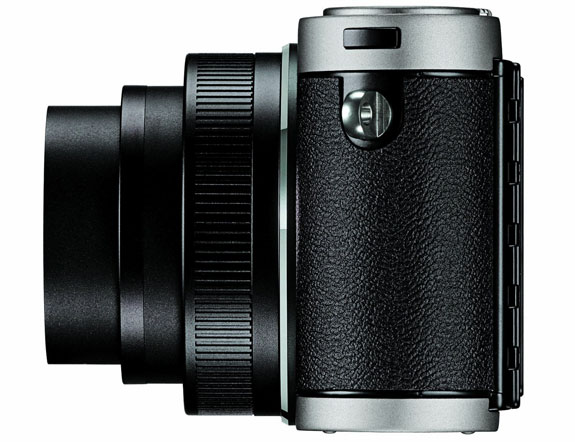
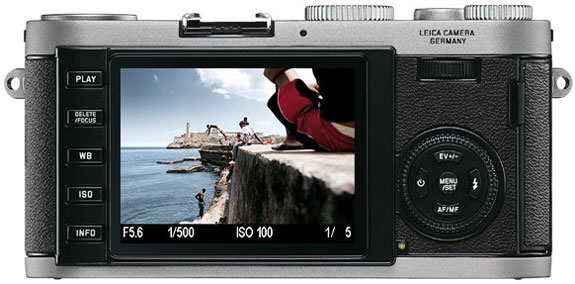











March 15th, 2011at 11:38 am(#)
Hi,
you wrote – Leica X1 doesn’t support RAW but DNG.
DNG is a RAW! It is like NEF for Nikon or X3F for Sigma etc.
You can edit DNG (RAW) in Lightroom. All serious Leica digital cameras shot in DNG.
[Reply to this comment]